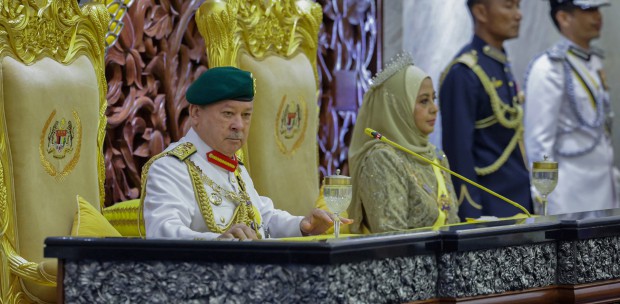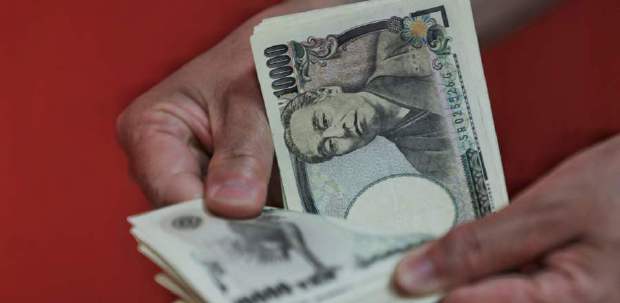In late August 2023, Eco World International Bhd (EWI) declared a bumper dividend of 33 sen per share, amounting to RM792 million.
This bumper dividend payout was pursuant to the completion of the reduction of the issued share capital of EWI under Section 117 of the Companies Act 2016 (CA2016), which had been announced on 3 August 2023.
Swiftly after the declaration of this bumper dividend, the property developer stated that it intends to declare even more dividends moving forward due to lower working capital requirements, as it looked to hold back on new launches while waiting for market conditions to improve.
In a press release announcing EWI's third quarter financial results, EWI's president and chief executive officer, Dato' Teow Leong Seng, said that the declaration of more dividends "is consistent with our intention to progressively distribute the bulk of the proceeds received from the monetisation of stocks, less reduced working capital requirements, to our shareholders as dividends over time".
He added that the company will continue to focus on monetising its stocks to distribute more excess cash back to shareholders.
"With regard to new launches, these will continue to be put on hold until market conditions improve, and cost pressures stabilise. As a result, the immediate working capital requirements of the group will be lower than originally estimated."
EWI is following the principle that if it does not have good use for its excess cash, it is better to return it to shareholders – as cash dividends.
Yet we have companies that hoard excess cash – cash far exceeding the foreseeable need of the company.
Hoard or distribute?
Deciding whether a listed company should hoard excess cash or return it to shareholders is a nuanced matter that involves a careful evaluation of several key factors. The optimal decision can significantly impact the company's financial health, growth prospects, shareholder relations, and overall success in the market.
Striking the right balance between retaining cash for strategic purposes and rewarding shareholders is critical for any company's management and board of directors.
First and foremost, a listed company must prioritise its financial health and stability.
Having an appropriate amount of excess cash is essential to ensure the organisation has sufficient liquidity to cover operational expenses, manage liabilities, and navigate unforeseen challenges.
This cash cushion acts as a financial safety net, allowing the company to withstand economic downturns, industry disruptions, or unexpected expenses.
It also instils confidence in stakeholders, including investors, creditors, and suppliers, bolstering the
company's reputation and creditworthiness.
Under the CA2016, it is an offence if a company becomes insolvent due to cash dividend distributions. The directors will be subject to sanctions in such instances, and to that extent, the CA spells out solvency tests to be applied when distributing cash dividends.
However, simply hoarding excess cash without purpose is not a prudent strategy.
A company should carefully evaluate its investment opportunities. If there are promising ventures, acquisitions, expansions, or research and development initiatives that can generate significant returns and drive future growth, retaining excess cash to fund these opportunities is often a wise decision.
Investing to improve products, entering new markets, or enhancing operational efficiency can create long-term value for the company and its shareholders.
On the other hand, returning excess cash to shareholders is a strategy to enhance shareholder value and maintain investor confidence.
Companies can achieve this through various means, such as issuing dividends or conducting share buybacks.
Dividends provide direct financial rewards to shareholders, especially those seeking regular income from their investments.
Share buybacks can boost stock prices by reducing the number of outstanding shares, resulting in increased earnings per share, which is often viewed favourably by investors.
The decision to return excess cash to shareholders should consider market expectations and investor preferences.
If a company has a history of paying dividends or has established a dividend policy that investors have come to expect, deviating significantly from this practice
may negatively impact the company's stock price and reputation.
Communication and transparency regarding the reasons behind the decision are crucial to managing expectations and mitigating potential negative repercussions.
The company's debt level and financing structure should also be considered. If the company has high debt levels, reducing debt obligations and interest payments might take precedence over returning cash to shareholders.
Maintaining a healthy debt-to-equity ratio is essential for long-term financial sustainability.
Future growth prospects and capital needs should be thoroughly evaluated to ensure the company has the necessary funds to pursue strategic initiatives.
If significant growth opportunities are on the horizon, retaining excess cash for future investments that will propel the company forward may be prudent.
Lastly, prudent risk management should guide the decision-making process. A contingency fund, built from excess cash, can act as a buffer against unexpected events, economic downturns, or operational challenges. It supports the company's ability to adapt and thrive in dynamic business environments.
By and large, the decision to hoard excess cash or return it to shareholders should be a strategic one, aligned with the company's financial health, growth objectives, shareholder expectations, and broader market dynamics.
Striking the right balance involves careful analysis, transparent communication, and a commitment to enhancing shareholder value while ensuring the company's long-term sustainability and resilience.
Ultimately, the decision should serve the best interests of the company, its shareholders, and its stakeholders.
*The writer is the chief executive officer of the Minority Shareholders Watch Group.





